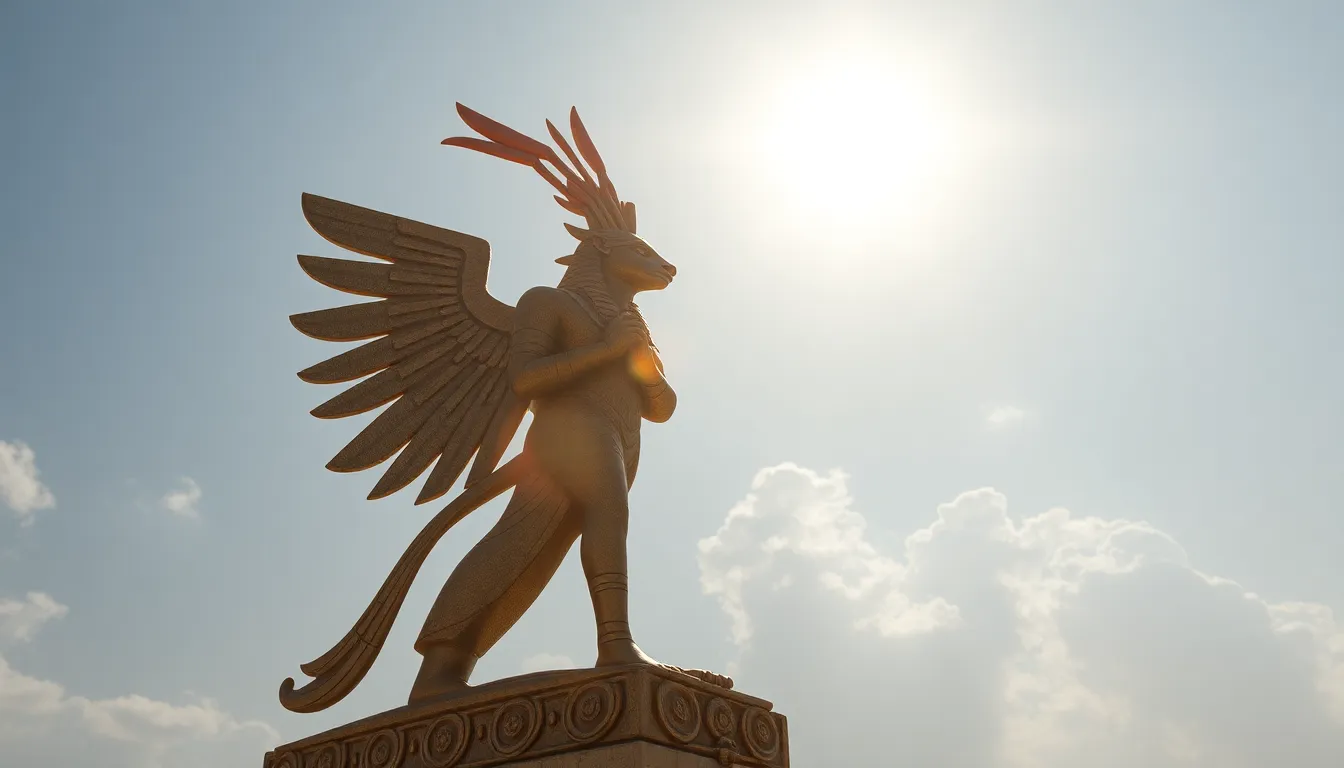The Spiritual Significance of the Egyptian Sun God
I. Introduction
The Egyptian Sun God, a central figure in ancient Egyptian mythology, embodies the essence of life, light, and vitality. Throughout the millennia, various solar deities emerged in Egyptian culture, with Ra, Horus, and Aten among the most significant. The worship of these gods reflects the importance of the sun in agriculture, daily life, and spiritual beliefs.
This article aims to explore the spiritual significance of the Egyptian Sun God, examining his attributes, historical context, role in creation myths, influence on society, and legacy in modern interpretations.
II. Historical Context of the Egyptian Sun God
The origins of the sun god in Egyptian mythology can be traced back to the earliest dynastic periods. Initially, the sun was represented as a simple disk, evolving into complex deities as the culture advanced.
- Origins: The worship of solar deities began with the ancient Egyptians’ reverence for the sun as a source of life.
- Evolution: Over time, different aspects of the sun were personified in gods like Ra, who became the chief deity, and Aten, representing a more monotheistic view during the reign of Akhenaten.
- Historical periods: Key periods such as the Old Kingdom, Middle Kingdom, and New Kingdom saw shifts in the prominence of solar worship.
Major temples dedicated to the sun god, such as the Temple of Karnak and the Temple of Ra at Heliopolis, served as centers for worship and pilgrimage, highlighting the sun god’s significance in ancient Egyptian life.
III. Primary Attributes and Symbolism
The sun god embodies several key characteristics that reflect his importance in Egyptian mythology:
- Ra: Often depicted with a falcon head crowned with a sun disk, Ra was seen as the creator god and the ruler of the sky.
- Horus: A sky god associated with kingship, Horus was also linked to the sun, particularly in his manifestation as Horakhty, the horizon god.
- Aten: Represented as a sun disk with rays extending towards humanity, Aten symbolized a more abstract concept of divinity during Akhenaten’s reign.
In Egyptian culture, the sun symbolizes:
- Life and growth
- Order and stability
- Illumination and clarity
The representation of the sun god in art and iconography often includes:
- Sun disks
- Falcon imagery
- Hieroglyphs depicting the sun
IV. The Sun God’s Role in Creation Myths
The sun god plays a pivotal role in various Egyptian creation myths. In one of the most prominent stories, Ra emerges from the primordial waters of Nun, representing the beginning of all creation.
The sun god’s relationship with other deities is integral to understanding his role in mythology:
- Osiris: Ra is often considered the father of Osiris, the god of the underworld, emphasizing the connection between life and death.
- Isis: As the mother of Horus, Isis’s relationship with Ra highlights the sun god’s protective nature.
The sun is viewed as a life-giving force, crucial for agriculture and sustenance, reinforcing the divine connection between the sun god and the cycle of life.
V. The Sun God and the Afterlife
The journey of the dead is significantly tied to the sun god in Egyptian beliefs. It was believed that the deceased would travel through the underworld, ultimately seeking to reunite with Ra in the afterlife.
This connection illustrates the cycles of life and rebirth:
- The daily rising and setting of the sun symbolizes resurrection.
- The sun’s journey through the night reflects the passage of the soul through the afterlife.
Rituals and practices surrounding the sun god included:
- Funeral rites emphasizing solar symbolism
- Offerings to ensure a safe journey for the deceased
- Recitations of hymns dedicated to Ra
VI. Influence on Egyptian Society and Culture
The sun god’s influence extended into various aspects of Egyptian society:
- Governance: Pharaohs claimed descent from the sun god, legitimizing their authority.
- Festivals: Celebrations like the Wepet-Renpet (the opening of the year) honored the sun and its cycles.
- Literature: Myths and stories featuring the sun god were integral to Egyptian storytelling, reinforcing cultural values.
VII. Modern Interpretations and Legacy
Today, the sun god continues to inspire contemporary spiritual practices:
- Many modern spiritual movements incorporate elements of ancient Egyptian beliefs.
- The sun god’s symbolism is often found in art, literature, and popular culture.
Additionally, the legacy of the sun god manifests in:
- Artistic representations in museums and exhibitions
- Literature that draws on Egyptian mythology
- New Age beliefs that emphasize solar energy and healing
VIII. Conclusion
In summary, the Egyptian sun god’s spiritual significance permeates various aspects of ancient Egyptian life, from governance to mythology and the afterlife. His enduring legacy continues to resonate in modern spiritual practices and cultural representations.
Understanding the beliefs surrounding the sun god offers valuable insight into ancient perspectives on life, death, and the universe. The reverence for the sun as a life-giving force remains a powerful reminder of humanity’s connection to nature and the cosmos.




